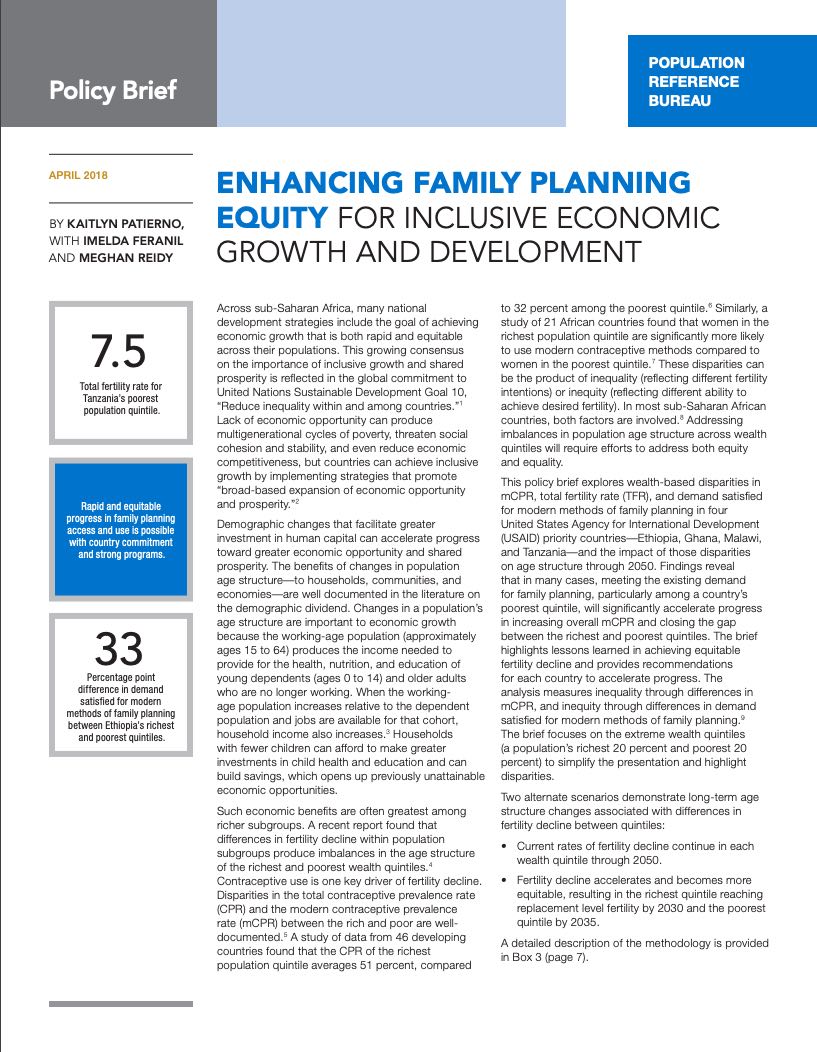
Enhancing Family Planning Equity for Inclusive Economic Growth and Development
Across sub-Saharan Africa, national development strategies have established the goal of achieving economic growth that is both rapid and equitable across a population. Efforts to promote shared prosperity will be strengthened by demographic changes that facilitate greater investment in human capital. Households with fewer children can afford to make greater investments in child health and education and can build savings. Such benefits are often greatest among richer subgroups.
Differences in fertility decline produce imbalances in the age structure of a country’s richest and poorest wealth quintiles. Disparities in contraceptive use—a key driver of fertility decline—between the rich and poor are well-documented. These disparities can be the product of inequality (reflecting different fertility intentions) or inequity (reflecting different ability to achieve desired fertility). In most sub-Saharan African countries, both factors are involved.
This policy brief explores wealth-based disparities in the modern contraceptive prevalence rate, total fertility rate, and demand satisfied for modern methods of family planning in four United States Agency for International Development priority countries—Ethiopia, Ghana, Malawi, and Tanzania. It explores the impact of those disparities on the age structure of the richest and poorest wealth quintiles through 2050 and highlights lessons learned in achieving equitable fertility decline and recommendations for each country to accelerate progress. While the degree to which countries prioritize family planning varies, ensuring that the benefits of smaller families are available to households regardless of socioeconomic status can accelerate progress toward inclusive economic growth and shared prosperity. All countries striving for such growth should prioritize reducing wealth-based fertility disparities.

 ">
">